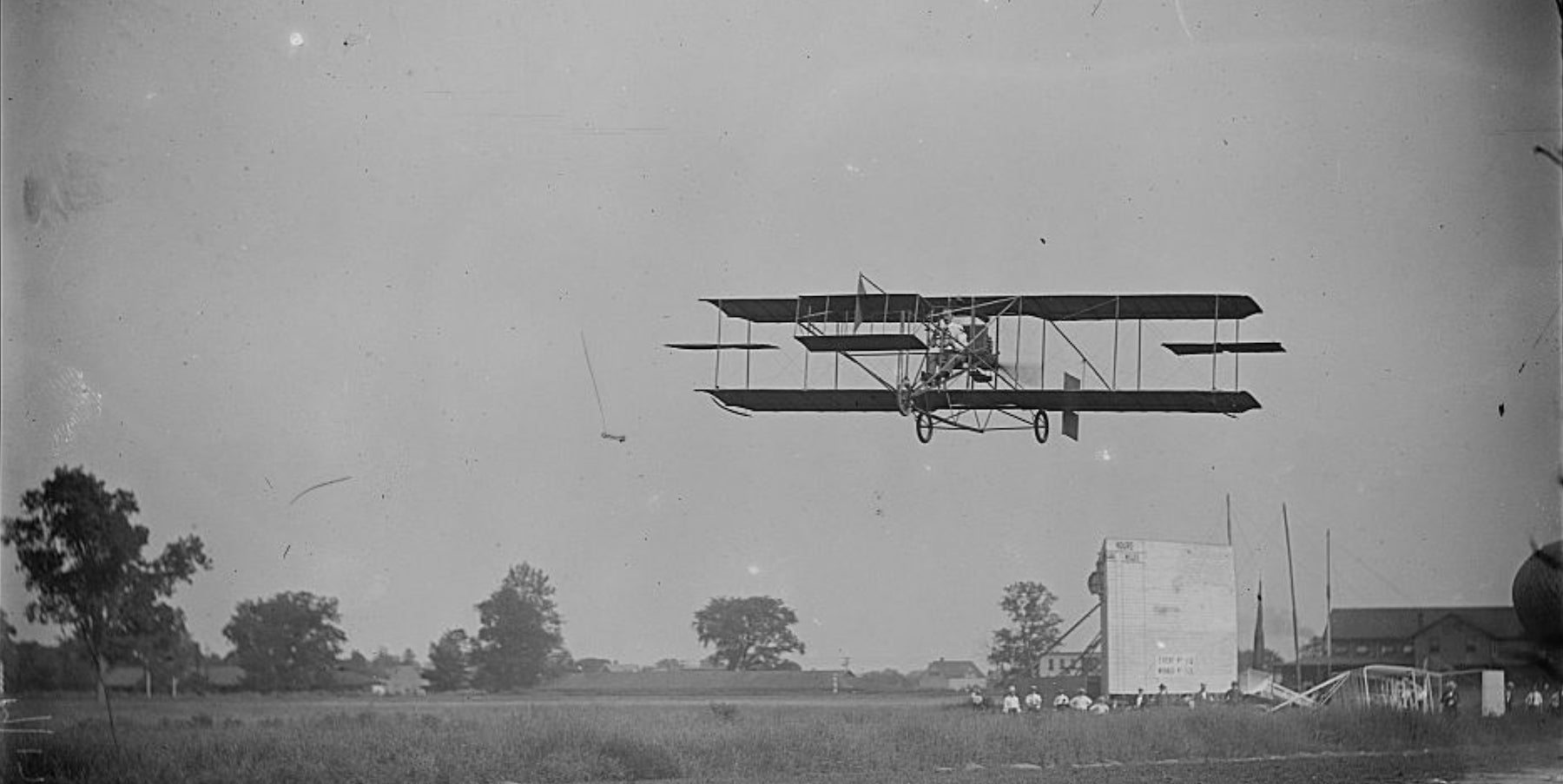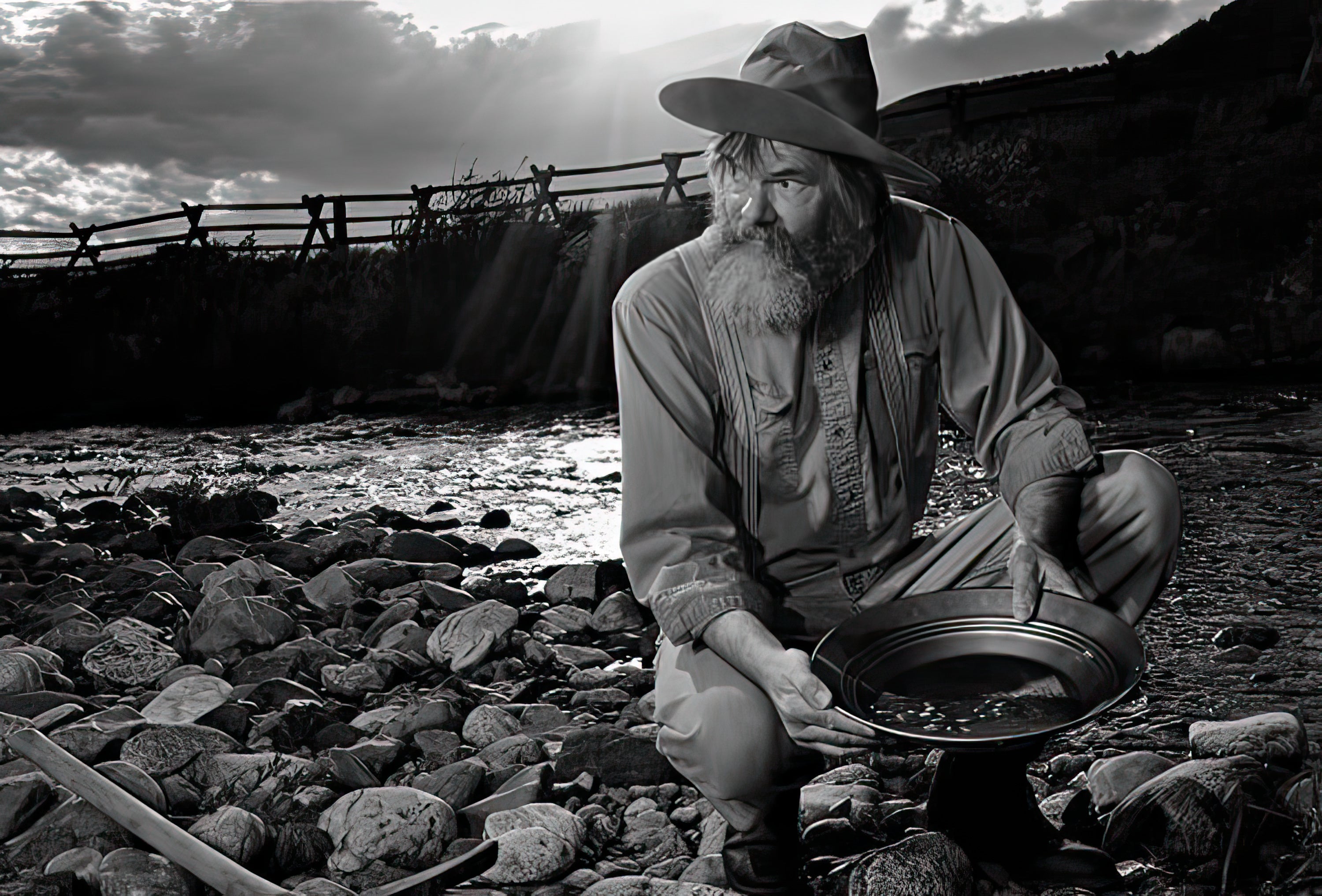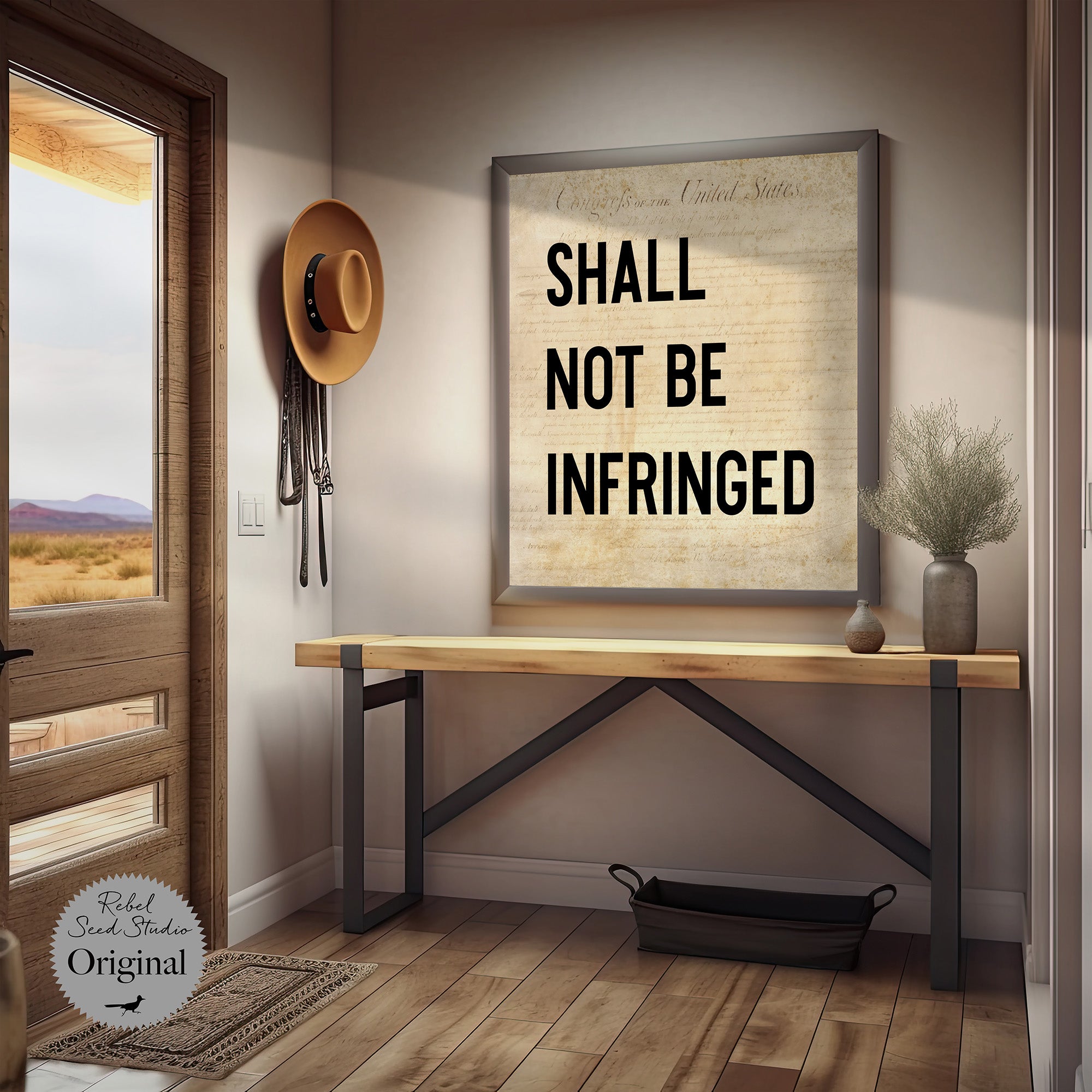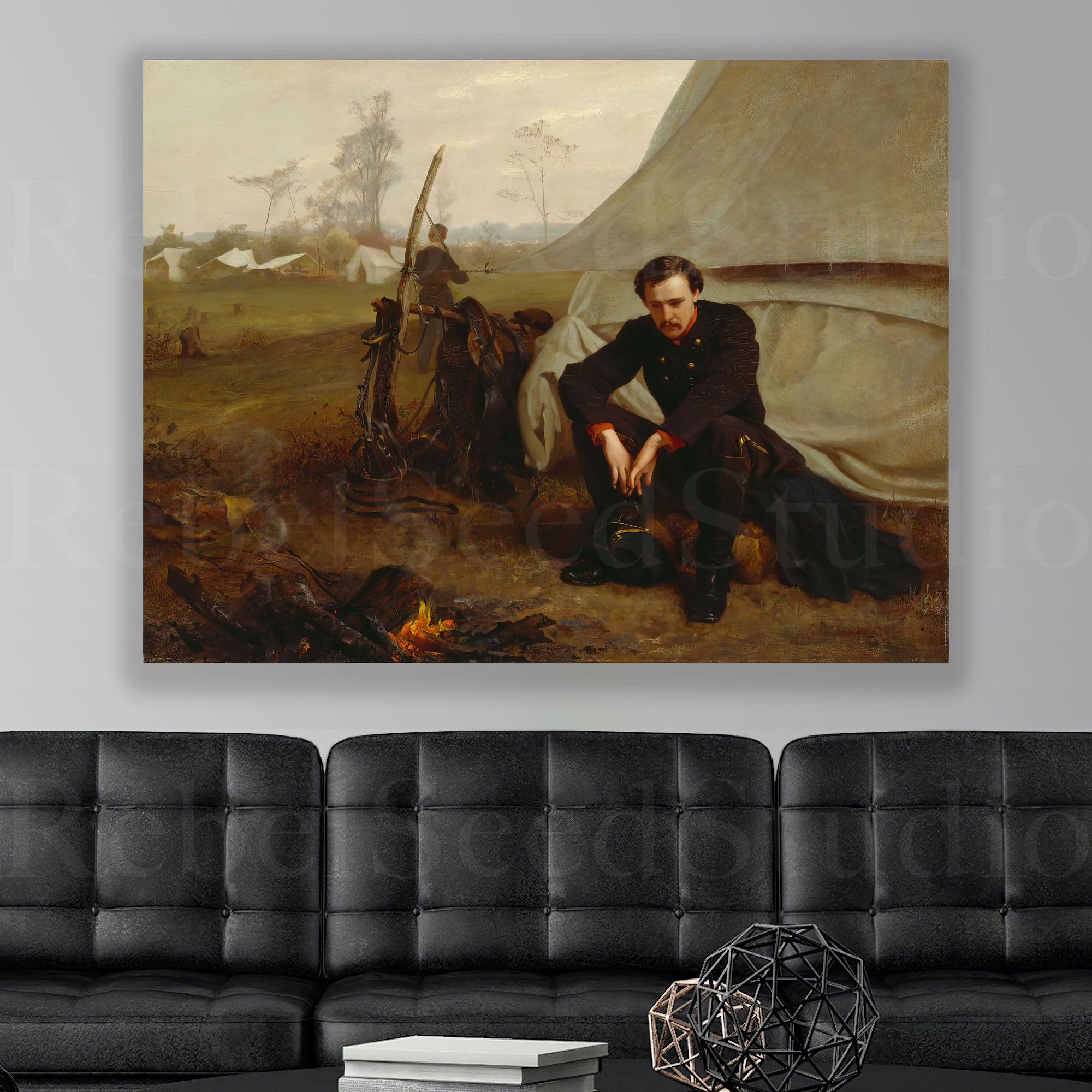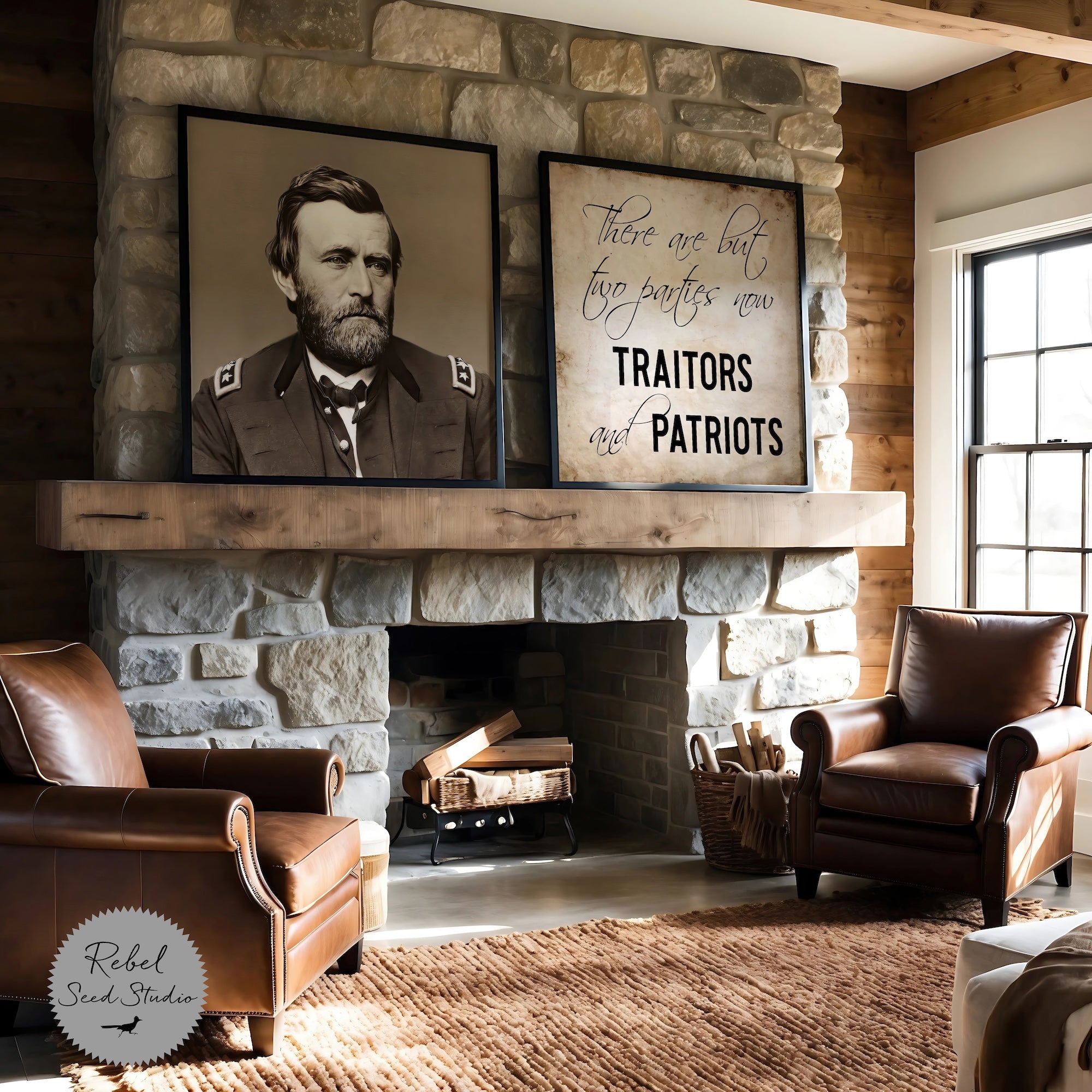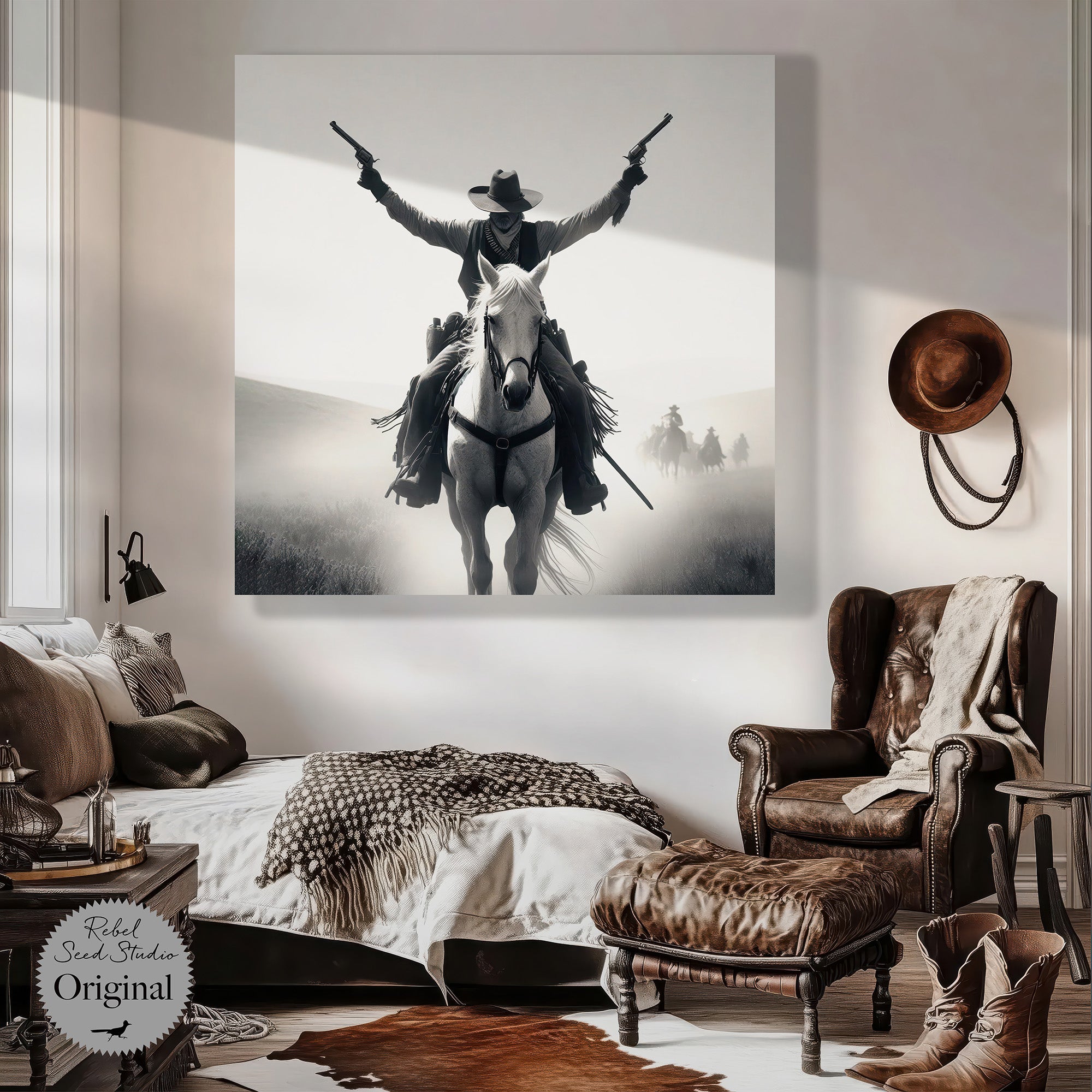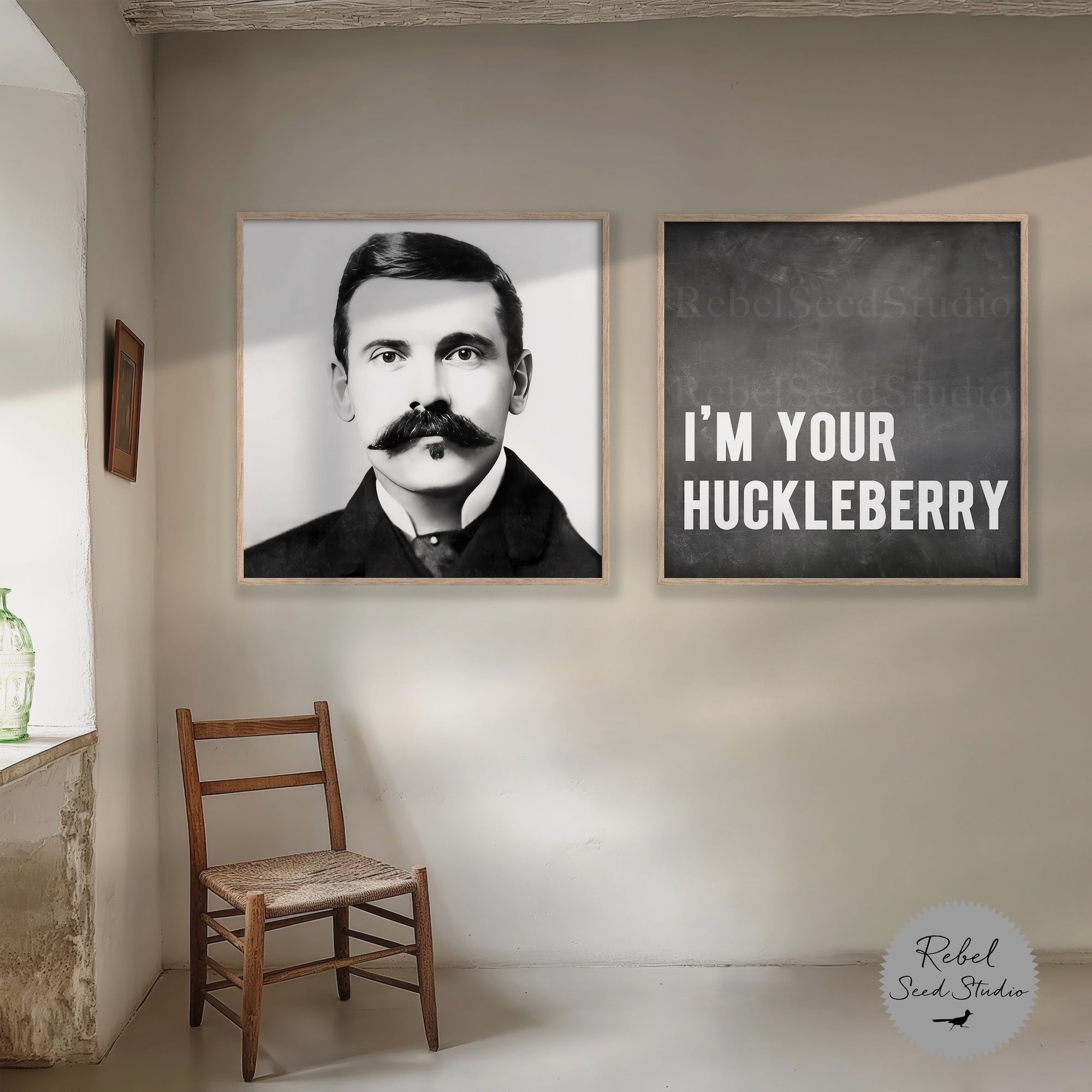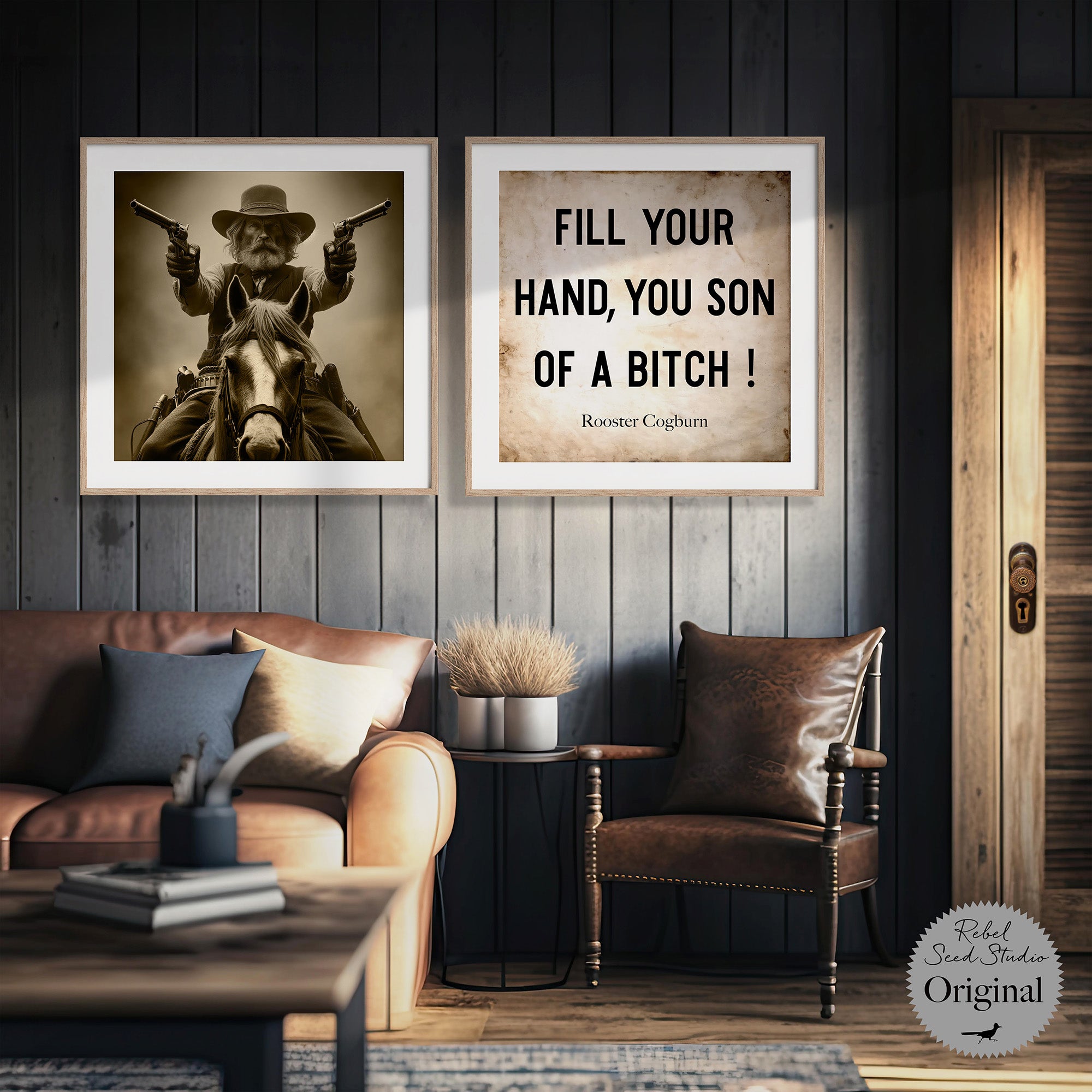
The Way to the West: Daniel Boone (Historical Reprint)
Historical article reprinted from the book "The Way to the West and the Lives of Three Early Americans: Boone, Crockett, Carson" written by Emerson Hough in 1903.
Related Art: Daniel Boone
Among the great sayings of great men there is one that rings like a trumpet voice through all the press of years. “Here stand I,” said Martin Luther. “Here I stand. I cannot otherwise. God help me!” If we should come to comparisons, we might perhaps call Daniel Boone the Luther of the frontier, the evangel of adventure, the prophet of early westbound daring. Certainly, he was the most forward, the most present, the most instant man of his place and time.
If we endeavor to see Daniel Boone, the man, we find ourselves at the outset dealing with a character already approaching the mythical in quality. Certain folk imagine him as tall, thin, angular, uncouth. Others will portray a man with voice like thunder in the hills, with gore ever in his eye, in his voice perpetually the breathings of insatiate hate and rage. They will insist that Boone was bloody minded, overbearing, a man delighting in slaughters and riots. Such pictures are wrong; so much we may discover from the scant record of Boone’s real life.
He was Quaker-bred. Meeting every species of danger, he remained undaunted. Meeting every manner of adversity, he remained un-soured. With every reason for conceit, he remained unbitten of any personal vanity. To the end of his life, it was his belief that he was “an instrument ordained by Providence to settle the wilderness.” Those who knew him best state that he was “a man of ambition, shrewdness and energy, as well as of fine social qualities and an extreme sagacity.”
He was learned in the knowledge useful at his time, although of books he was not at all. Deeply religious, a worshiper of the Great Maker as evidenced in His works, he was not a church member. There was no vaunting in his soul of his own righteousness; yet never was he irritable even in old age, when the blood grows cold, and the thwarted ambitions come trooping home to roost in the lives of most. “God gave me a work to perform,” said he, “and I have done my best.” With this feeling he lived and died content.
Regarding the Boone of early years, we find it difficult to frame a clear picture. There is more information obtainable regarding his later life. A man reaching the ripe age of eighty-six, with five generations of his family living at the same time; a man snowy haired, yet still of ruddy complexion, of frame still unbent, with kindly and gentle personal habits - this is the real Daniel Boone: no swearer of oaths, no swashbuckler, no roisterer, but a self-respecting, fearless gentleman, steadfast, immovable from his fixed purpose, inalienable from the mission which he conceived to be his own.
A writer who knew him late in life says that on his introduction to Colonel Boone his impressions were those of “surprise, admiration and delight.” In boyhood he had read of Daniel Boone, the pioneer of Kentucky, the celebrated hunter and Indian fighter, and in imagination he portrayed a “rough, uncouth looking specimen of humanity, and, of course, at this period of life, an irritable and intractable old man. But in every respect,” says this biographer, “the reverse appeared. His high bold forehead was slightly bald, and his silver locks were combed smooth. His countenance was ruddy and fair, and exhibited the simplicity of a child. His voice was soft and melodious, and a smile frequently played over his face in conversation. His clothing was of the plain, coarse manufacture of the family. Everything about him indicated that kind of comfort that was congenial to his habits and feelings, and he evinced a happy old age. Boone abhorred a mean action and delighted in honesty and truth. He never delighted in the shedding of human blood, even that of his enemies in war. His remarkable quality was an unwavering and invincible fortitude.”
As to personal description, Boone was neither a tall nor a thin man. He was not angular nor bony. His frame was covered with firm and easily playing muscles, and he carried none of the useless tissue of the man of civilization. His weight was “about one hundred and seventy-five pounds.” Audubon, who met him late in his life, says: “He approached the gigantic in stature. His chest was broad and prominent, and his muscular powers were visible in every limb. His countenance gave indication of his great courage, enterprise, and perseverance.”
Yet, in person, Boone did not quite reach the six-foot mark, but was just below five feet and ten inches in stature, some say five feet eight inches. All agree that he was of “robust and powerful proportions.” One historian speaks of his “piercing hazel eye”; yet this is but romancing.
Most portraits of Daniel Boone are the products of imagination. The most authentic, perhaps the only authentic portrait of him, is that painted in 1820 by Chester Harding, “who,” says an early writer, “of American artists is the one most celebrated for his likenesses.” When Harding made his portrait of Boone, the latter was feeble, and had to be supported during the sittings. This portrait shows a face thin and pale, with hair of snowy whiteness and eye “bright blue, mild and pleasant.” The Harding portrait does not show the square chin that some writers give to Boone; and certainly it portrays no ferocious looking ruffian, but a man mild, gentle and contemplative.”
In his younger days he often wore the garb of the early American hunters - the buckskin or linsey hunting shirt, the fringed leggings of the same material, with moccasins made of the skin of the deer or buffalo. His hat was as chance would have it. Perhaps sometimes he wore a cap of fur.
His weaponry we may know exactly, for his rifle can be seen today, preserved by his descendants. It is the typical long-barreled, crooked-stocked, small-bore American rifle, with the wooden stock or fore end extending along the full length of the barrel. There are a few rude attempts at ornamentation on this historic arm. The sights lie close to the barrel, after the fashion of those deadly ancient weapons. The wood is rotting a little where the oil of long-ago cleaning operations has touched it. Perhaps the spring of the lock is a trifle weak.
In chronology Boone’s time runs back to that of Washington. He was born November 2, 1734, the date of Washington’s birth being 1732. His older brother was called Squire Boone, after the first American Boone, who was himself an Englishman, but who came to America early in the history of the lower colonies. The Boone homestead was once located in Bucks County, Pennsylvania, but Daniel was born after his parents had moved into Berks County, Pennsylvania, near the town that is now Reading. Some historians say he was born in Bucks County.
In his youth Daniel did not seek knowledge through the medium of books. His mind was “not of the most ardent nature.” Before him lay the great book of the Wilderness. Thus, he became well acquainted with the habits of wild game animals.
When Boone was eighteen years of age his family heard many stories about the Yadkin River country of North Carolina. Forthwith, they moved through the Shenandoah valley into what was then a yet wilder country than that of Pennsylvania. Here we have mythical tales of a fire hunt at night in which Daniel Boone “shined the eyes” of a certain maiden; of a deadly aim miraculously stayed, and a subsequent marriage unceremoniously sped. As to the fire hunt we may doubt, but as to the marriage there is no question. Boone married Rebecca Bryan in 1755. Therefore, Daniel must move once more, this time farther up the Yadkin, where the forests were yet more quiet, and neighbors still more distant.
Previous to his marriage Boone had been a hunter - what we would now call a professional hunter. He sometimes took hides and furs to the more distant Eastern settlements, and so saw some of the Virginia towns. The year before his marriage he was with the Pennsylvania militia, who fought the Indians along the border after the French had defeated George Washington and his Virginians at Great Meadows. In the fatal Braddock fight, Daniel Boone was a wagoner in the baggage train, and barely escaped with his life in the panic flight.
At twenty-one he was a man grown, matured, acquainted with all the duties and dangers of frontier life, physically fit for feats of strength, activity, and endurance, and both mentally and physically a perfect machine for the purposes of vanguard work in the wilderness. His emotions did not prevent his walking forthwith into what might be peril; and having entered perils, he was content if each day found him yet alive, nor did his mind entertain forebodings as to the morrow. The creed of the wilderness, the creed of wild things, had entered into his soul.
They call Daniel Boone explorer, hunter, Indian fighter. Let us figure him as philosopher. Temperament and training gave footing for that part of his philosophy that embodied his permanent personal conviction that “God had appointed him as an instrument for the settlement of the wilderness.”
Boone, after his marriage, and after his edging out westward toward the head of the Yadkin, lived much as he had done before. His cabin was no better than his neighbor’s, his little corn farm was much as theirs, albeit his table always had wild meat enough and to spare, and there were hides and furs in abundance. By this time, two generations of white men had held this slope of the Appalachians. The buffalo had crossed the mountains to the westward, though one writer says they were “abundant” on the Yadkin at this time. Boone may perhaps have seen an elk now and then along the Yadkin, but even this is not certain. Bear, deer, turkey, small-furred animals, he took in numbers. He was content. He must have been about thirty years of age before he began to evince traits distinctly different from those of his scattered wilderness neighbors; before he began to hear the Voices, whispering yet irresistible, that called him on; those Voices of the West, which for a hundred years called our best and boldest to come out into the unknown and the alluring.
In May 1769, Boone started out for his first determined exploration of “the far-famed but little-known land of Kentucky.” He had before this time been eager to cross the range and see for himself; indeed, he had made one short hunting trip into what is now the eastern edge of the state of Kentucky. Now, in the prime of life, at thirty-five years of age, he felt that the time had come for him to cross the range and make his abiding place in the West.
We are accustomed to think that Boone was the first explorer of Kentucky, but that was not the case. Boone’s first trip across the mountains, to the headwaters of the Holston, was in 1761. John Peter Salling, a West Virginian, crossed Kentucky and Illinois as early as 1738. Doctor Thomas Walker and a party of Virginians had long before deliberately explored a part of Kentucky; and in 1751 Boone’s Yadkin neighbor, Christopher Gist - the same Gist that accompanied Washington in his dangerous winter trip to the French forts on the Ohio - made yet fuller explorations.
Some of these early voyages were not made of intent. Salling crossed Kentucky as a captive of the Indians, who took him as far west as Kaskaskia; and Mary Draper Ingles, “the first American bride west of the mountains,” whose father established the first settlement west of the Alleghanies, was in 1755 taken captive by Indians, and carried across Kentucky and parts of Ohio and Indiana, thus being an explorer quite against her will.
Two hunters from Pittsburg, James Harrod and Michael Steiner or Stoner, after pushing out into the Illinois country, crossed the Ohio and traveled across Kentucky, as far south as the present city of Nashville, Tennessee. Steiner and Harrod were friends of Boone’s, and Harrod built his stockade of Harrodsburg a year before Boonesborough was begun, his journey with Steiner having been made two years before Boone made his pilgrimage across the Divide.
Kasper Mansker or Mansco, later a famous scout and Indian fighter, went with the Virginian “Long Hunters” into Kentucky in 1769. John Finley or Finlay had traded with the Indians on the Red River of Kentucky in 1752, some years before Boone saw that region. Finley was an associate of Boone’s in the border wars before Boone was married, and it was Finley, in all likelihood, that first set Boone aflame with the desire to see and settle in Kentucky. Yet, he might have had the counsel of James McBride, who in 1754 visited the mouth of the Kentucky River, and came back to say that he “had found the best tract of land in North America, and probably in the world.” Finley added to these stories, and clinched it all by saying that game of all kinds was abundant, that the mountains were beautiful beyond description, and that, moreover, salt could be manufactured on the spot.
This last argument had very much to do with the settlement of Kentucky. Salt and lead were essentials. Salt was heavy. The transportation across these grim mountains was difficult. If one could have salt in Kentucky, it would not be necessary for one to come back.
In 1770 the “Long Hunters” of Joseph Drake and Henry Skaggs were in Kentucky - indeed, ran across Daniel Boone there; yet Kentucky was then an oldish land. In 1766 James Smith and five others explored much of west Tennessee, and worked north as far as Illinois. The Virginian, John McCullough, with one white companion, saw Kentucky in the summer of 1769, pushed on northward as far as the point where Terre Haute, Indiana, now stands, and later descended the Mississippi River to New Orleans. Uriah Stone took a party of twenty hunters over the Cumberland Gap into Kentucky in June 1769, one month later than Boone’s journey; but Stone had been in Kentucky in 1766.
George Washington was on the Ohio River in 1770 and 1767; John Finley in 1752; Christopher Gist in 1750; Doctor Thomas Walker in 1748; John Peter Salling and John Howard, in 1742, we have noted. Before all these was the French expedition of 1735. Indeed, just one hundred years before Boone’s journey into Kentucky, John Lederer, a Virginian, crossed the Alleghanies and fared westward for some distance; and ninety-nine years before Boone’s first glimpse of the delectable land, Thomas Batts and party had “taken possession” of the headwaters of the Great Kanawha in the name of Charles II.
Kentucky and the trans-Appalachian land was not wholly unknown but indeed fairly well understood and accurately forecast in possibilities, more than a generation before Daniel Boone ever saw it. Where, then, is Boone’s fame as an explorer? Upon what does his reputation as an adventurer rest? What claim had he to hold himself as an “instrument for the settlement of the wilderness”?
The answer to all these questions is read in the record of the holding of Kentucky. It is found in the inefficacy of a “taking possession” by means of the temporary planting of a flag and the empty claiming of a territory extending from sea to sea. The flag of Boonesborough was planted never to come down. The stockade of the homebuilders was defended by an “unwavering fortitude.” Kentucky discovered Daniel Boone, not Daniel Boone discovered Kentucky.
The birth of a new man in the world, the American, had now taken place. The Old World explorers took possession with a flag, furled it and carried it away again. The new man, the American, flung out a flag that has never yet come down. John Finley guided Daniel Boone across the Cumberland Gap; but he guided him into a land now ready for a Daniel Boone - into a West now ready for the American man.
It was, then, in May 1769, that Boone left the Yadkin settlements and started westward. He had as companions John Finley, Joseph Holden, James Monay or Mooney, William Coole or Cooley, and John Stewart or Stuart. Of all the different expeditions into the region west of the Appalachians this was the most important. Following its doings, you shall see the long spur of the Anglo-Saxon civilization thrusting out and out into the West - to the Mississippi, the Missouri, the Rockies, the Pacific - and never setting backward foot.
The journey over the mountains was not rapid and not continuous, it being necessary for the party to hunt as well as to explore. The rifle, the ax, the horse, the boat, were their aids and agents, their argument and answer to the wilderness.
Boone and his friends seem to have camped on the east side of the Cumberland Mountains, where they remained for “some days.” It was from this camp that they made expeditions, and at length climbed to a certain ridge whence they could see the glorious realm of Kentucky. On this day they saw their first herd of buffalo, the first trail-makers over the Appalachians, of which they killed some numbers. They saw, also, elk, deer, and other animals. Boone was delighted. There thrilled in his heart all the joy of the hunter and explorer. Now the little party moved over to the Red River, where Finley had formerly been located. “Here,” said Boone, “both man and beast may grow to their full size.” That was good American prophecy.
For six months this adventurous little party lived and hunted in their new empire. Then, swiftly and without warning, there came a taste of some of the disadvantages of this wild residence. Stewart and Boone were taken captive by the Indians and were carried to the north, a march of seven days. On the seventh night they made their escape and came back to their bivouac on the Red River, only to find that their friends had left them and returned to the settlements. As offset to this unpleasant news came their present discovery by Squire Boone and one companion, Alexander Neeley, who had followed the adventurers all the way into Kentucky. Daniel’s older brother had brought with him some needful supplies, chief of these powder and lead, worth far more than gold and silver.
Soon after this period, John Stewart was killed by the Indians. Hence, the two Boone brothers were left alone, Squire Boone’s companion having met his fate in some mysterious manner, perhaps at the hands of the Indians, though others state that he was devoured by wolves - an unlikely story. The two brothers built a rude cabin of poles and bark, and there they spent the fall and summer of 1769. In May of the following year Squire Boone returned to North Carolina.
Daniel Boone is now alone in the wilderness of Kentucky. He was at this time, so far as he knew, the only white man in that entire section of country. Fearless, adventurous, and self-reliant, he extended his wanderings farther to the west, and visited the site of what is now the city of Louisville. His life depended entirely upon his own vigilance. He was without bread or salt, without even a dog to keep him company or serve as guard. Naturally he met the Indians. Once when pursued by the Indians, he escaped by the clever artifice of swinging himself far to one side of his trail by means of a depending grapevine - a stratagem not recorded of any other Western adventurer.
He seems to have been happy, alone in solitude. His consolation came in his communing with the wild things about him, in his readings in the great book of nature. His gallery was the magnificent one of wood and stream and hill.
After some time, the faithful Squire Boone returned, all the way from the far-off Yadkin. These two discovered country of such fertility, and such abundance in game, that they no longer had any heart left for the more barren region of North Carolina. They determined to bring their families, and the fall of that year saw them both back at the old home, making plans for the pilgrimage into the new world beyond the Alleghanies. It was not until the fall of 1773 that Daniel was able to sell his farm and get together his effects.
Five families left the Yadkin with him for Kentucky, these being joined later by forty men, all of whom traveled under the guidance of Boone. They proceeded westward in pastoral cavalcade, driving their herds and carrying their effects with them. So far, very well, until the 10th of October, when came the first ambuscade of the Indians. Six men of the party were killed, among these a son of Daniel Boone. The cattle were scattered or destroyed. No wonder that all lost heart except the steadfast leader. He was content to remain with the retreating party in the settlements of the Clinch River only until June of the following year.
Now, biding his time, Boone receives a message from the governor of Virginia. It seems there are certain surveyors who have gone down the Ohio River and have lost themselves in the wilderness. Could Daniel Boone discover these surveyors for the governor? Assuredly. And hence he undertakes his first real mission of independent leadership. He has but one companion, Michael Stoner or Steiner, and before them lie many hundreds of miles of trackless forest, with no road, no path, no trail. Yet the surveyors are found and led safely back to their own.
This act seems to inspire confidence in Boone, and Colonel Henderson, a famous land speculator, employs him as his agent for the purchase from the Southern Indians of certain lands lying south of the Kentucky River. Boone is successful in these negotiations. It is necessary now that there should be a road established between these outlying lands and the door of civilization. Who better than Boone to establish this wilderness trail? He lays out the way from the Holston to the Kentucky River. In this work, four of his party were killed and five wounded.
It was in April 1775, that Boone erected a station or palisade on the Kentucky River near a salt lick. The stockade was built “sixty yards from the south bank of the stream.” This was close to the present site of the town of Frankfort, Kentucky. Another writer says the date of the foundation of Boonesborough - as the station was called- was June f14, 1775. Dates are unimportant. The fact is that Boone, during that spring, attained his immediate and most cherished ambition. He established his home in the heart of this beautiful land of Kentucky.
He moved his family, his wife and daughter being the first white women willingly and of intent to set foot on the soil of Kentucky. Boone was now in the heyday of life, strong, fearless, tireless, a keen hunter, a cool-headed warrior. The ways of the wilderness were known to him. The imprint on the moss, the discolored water at the fountain, the broken bough, the abraded bark on the tree-trunk - all these things were an open book. If Indians crossed the country within a score of miles of his station, Boone knew of them, knew how they were armed, knew what was their purpose in that land. None could have been better equipped than he as “an instrument for the settlement of the wilderness.”
Life went on in Kentucky, much as on the Yadkin, on the Clinch or on the Holston. White men began to gather in at the station of Boonesborough, or at one of the two or three other posts that now were established in the land. These white men, shoulder to shoulder, fought the Indians. The leader of this wild warfare was Daniel Boone, the man of “unwavering fortitude.”
The war of the rebellion against the Old World was now going on apace. Great Britain had given Indians below the Great Lakes better arms and had deliberately incited a more insatiate enmity against the white man. Whereas the Indians had at first adopted prisoners into their tribe, they now became more implacable, in many more instances killing such prisoners as fell into their hands.
Here we find ourselves again to some extent in the realms of imagination as to the adventures of Daniel Boone. We meet the ancient anecdote of the capture by the Indians of Boone’s daughter, in company with two daughters of the neighboring Calloway family. Some say that the children were out hunting up the cows, others that they were in a canoe on the river, and that the canoe was taken away by an Indian who swam out and made them prisoners. Boone and Calloway raised a party in pursuit, and it is historical fact that they rescued their daughters; though some state that the rescue was effected within a few miles of the post, whereas others place it after a long journey, and state that Boone and Calloway were themselves taken prisoners by the Indians, and in turn rescued by their surviving companions only after a bitter struggle.
The civilized necessity for salt was one of the chief causes of danger for these Kentuckians. In 1778, Boone, with twenty-seven companions, was engaged in salt-making at the Blue Licks, when they were surrounded by a large band of Indians. Boone was made captive, with others, and taken north across the Ohio River. These Indians were Shawnee, from the Pickaway Plain. Eventually they took Boone as far north as Detroit, where the commandant, Hamilton, pleased with Boone’s manly character, undertook to ransom him from the Indians. The latter, however, would not hear to this, and after some parleying concluded to make Boone one of their tribe.
He lived with them for some months, his fate meantime quite unknown to his friends at Boonesborough. At length, discovering a war party of more than four hundred Indians preparing to invade the Kentucky frontier, he escaped from his captors, journeyed two hundred miles to the southward, and saved not only Boonesborough but all the infant posts of this new commonwealth beyond the Alleghanies. This, were there naught else to commend him, should establish Boone’s place as one of the great pillars of the westbound civilization.
After the Indians were at last beaten away in this attack, Boone found that he was a man not without a country, but without a family. His wife, supposing him dead, had returned to the old home on the Yadkin. There is a wide hiatus here in the Boone history, regarding which Boone himself is reticent.
It is probable that at this time there began those legal difficulties that later caused the pioneer to leave his chosen land. He had been given a grant of land by the governor of Virginia, but the state of Kentucky had never been surveyed, and it was the fashion and privilege of every holder of one of these loose titles to locate his land as he pleased, and to record it in the simplest and most primitive fashion. Thus, there came to be many claimants for the best of the lands, the desirable tracts being sometimes deeply covered by these old-time “shingle titles.”
The courts swiftly followed into these crude little Kentucky communities. It may have been the legal complications in which Boone now found himself that made him unwilling to speak of this period of his life. It is also known that at one time he was custodian of some twenty thousand dollars of money, which he intended to take eastward across the Alleghanies for the purchase of lands. He was robbed, and hence carried to his grave the bitter sense that he had been unable to carry out a trust that had been imposed on him. Yet, be these things as they may, the fact remains that he did again bring his family to his chosen settlement on the Kentucky River.
Meantime, the Northern Indians, under their own leaders, under the leadership of British officers, under the leadership of the dangerous renegades, Girty and McKee, came down time-and-again on the Kentucky settlements. The salt parties must go out as before, and in one of these excursions Squire Boone, Daniel’s beloved older brother, fell a victim to the Indians. In the celebrated and ill-fated McGary fight - the blackest battle of all Kentucky - son of Daniel Boone’s fell with the flower of the frontier. Again, and again, the tribes came raging down, the Cherokee, the Potawatami, the Shawnee, all joining hands to wipe these settlements from the face of the earth.
The year 1781 was one of wrath for the thin firing line on the western side of the Divide. All the fights and the fighters centered about or came from the “Dark and Bloody Ground.” Clark, Hardin, Harmar - all these started from Kentucky, and by reason of Kentucky. It was General Scott with one thousand Kentuckians that avenged the defeat of St. Clair, killed two hundred of the victorious Indians, and took back from them their loot. In the seven years from 1783 to 1790 there were fifteen hundred whites killed or taken captive in the state of Kentucky.
Once Simon Kenton, himself a hardy soul, set out with some friends on a little hunt from the station at Boonesborough. They were fired upon by Indians from ambush. One man was shot down by the Indians within seventy yards of the stockade. His murderer would have scalped him had not Kenton dropped him, a corpse beside a corpse. Then it was general mêlée until Daniel Boone and ten others came out from the stockade to assist their fighting comrades. Kenton killed another Indian, and then there came a rush. Boone directed a charge upon the Indians, but was shot down, a ball breaking his leg. Kenton, brave fellow that he was, shot down Boone’s assailant and carried Boone safely into the fort. As he lay on the couch receiving attention for the leg broken by the ball, Boone sent for Kenton and said: “Well, Simon, you have behaved like a man today. Indeed, you are a fine fellow.” That was all there was to it. They made no great parade. There was no proclamation in the public places. In times of such continual excitement and danger it is small wonder that there has been but scant record kept of individual deeds of daring. Boone himself was not wont to boast of his own prowess, and regarding his deeds of arms there are not many authentic anecdotes.
One of the best known of his adventures was that in which he met two Indians in the forest while he himself was alone. Those were flint-lock days, and Boone was, according to the story, able, by watching the flash of the first Indian’s rifle, to throw himself out of the way of the bullet. This maneuver he repeated with the second Indian. Then he calmly shot one Indian dead with his rifle, closed with the other, received a blow of his tomahawk on his own rifle barrel, and killed the Indian with his knife. A statue commemorating this feat was later placed above the south door of the rotunda in the Capitol at Washington.
There was need in Boone’s case of fortitude, not only of the physical but of the moral sort. In 1792 Kentucky, which had formerly been a county of the state of Virginia, was set up as a state by itself, with courts, jails, judges, lawyers and all the appurtenances of the artificial civilization that Boone had hoped to leave forever behind him.
Then came lawsuits regarding the lapping titles. Daniel Boone found himself among the haggling officials of the law courts. It broke his heart. Stunned but not protesting, he gave up that beautiful land he had enabled all these others to find and to hold. He was old now, and had fought the main fight of his life only to find himself the loser.
He left now for the mouth of the great Kanawha, but found the hunting poor. A son of his had crossed the Mississippi River and sent back word that there was still a West, still a country with buffalo and elk, and with otter and beaver in the streams. There was to be one more pilgrimage for Daniel Boone, a pilgrimage down the Ohio River, ending in the region, still wilderness, not far from the point that is now the city of St. Louis. Bear in mind that this latter point was not within the United States. Daniel Boone was an emigrant from the land he had founded. He was going now out from under the infant Stars and Stripes.
In token of his character, the Spanish governor of Louisiana gave Boone some sort of trifling commission. He was made commandant or syndic, an official with about the same importance as a country justice of the peace today. By the terms of his settlement in that country, Boone was entitled to a tract of ten thousand acres of land. He was wrongly informed that, as he was an officer of the state, he need not settle nor improve his land. Once more, a fatal mistake for the man who knew the book of nature better than the printed page.
Late in his life, the American government, now reaching its control over this trans-Missouri country, takes up the question of Boone’s tract of land and allows him, with extreme generosity, one-tenth of that which by every right and title of justice ought to have been his own in fee simple in return for what he had done for the civilization of America. This was the poor pittance that Daniel Boone, one of the great Americans, was able to hand down to his posterity.
There is uncertainty, or rather discrepancy, regarding the date of his death. One writer states that he died at the age of eighty-four, in the year 1818. The date of his death was actually September 26, 1820, he being at that time eighty-six years of age.
In his later years Boone kept up those practices that had endeared themselves to him in his earlier lifetime. In a mild way he was a trapper, and always he was a hunter. Even when he had passed his eightieth year he went each fall in pursuit of the deer, the turkey, the elk, or the furred animals, or followed his simple pastime of squirrel hunting, in which he was expert. It was his custom on these excursions to exact a promise from his attendant that, in case of his death, his body should be properly cared for. He long kept his coffin under his bed at his home, near Charette, Missouri. Once, taken sick in camp, he marked out the place for his grave.
From this indisposition, however, he recovered, and went on several other hunts later. Failing gradually, though not from any specific disease, Boone met the great and final enemy with the same fortitude that had been with him all his life. He had said farewell to all earthly ambitions, and was ready to die when the time might come. He kept the coffin under his bed not in any bravado, but in a simple wish for complete preparedness. His personal habits remained sweet and simple as of old. Overtaken once more by America, once more surrounded by the civilization from which he had by choice always alienated himself, he at length lay down peacefully to his final sleep beneath the trees.
Boone seems to have wandered a little farther to the West than his home near St. Louis. It is said that he “saw the mouth of the Kansas River,” and that he noted, with the impatient longing of an old man, the passing upstream, into the mysterious Northwest, of those early parties of fur traders, the voyagers who were now heading the far Western American migration. It was now too late in the closing years. It is said that he trapped on the Kaw and the Osage, and he is said to have made one journey “up the Missouri, and to have reached the mouth of the Yellowstone”, whence he was driven back by Indians.
Some twenty-five years after his death, the legislature of Kentucky awakened to a sense of the greatness of this man, and to the onerous nature of that debt of gratitude under which he had placed his commonwealth. By virtue of a special enactment, the bodies of Boone and his faithful wife were moved from their Missouri home, eastward across the Mississippi River, and laid at rest in the cemetery of Frankfort, close to that original stockade where, supported by an “unwavering fortitude”, there first flew the hard beset flag of the westbound. These coffins came garlanded with flowers, heralded with music, surrounded with tardy honors. They were laid away on September 13, 1845. There were effusive speeches in abundance, the chief oration being pronounced by Mr. Crittenden, “the leading orator of his time,” as he is called in the chronicle. Thus, at last this primeval patriarch, this Father of the Frontier, this leader of the Western homebuilders, came home to sleep on the soil that was by right his own.


